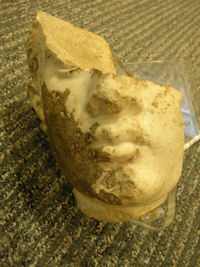
Figure 11: The Fishbourne head (Authors' photo, courtesy of the Sussex Archaeological Society)
The life-size head of a young man from the later 1st-century Roman palace of Fishbourne in West Sussex (Figure 11) is the only one of the three portraits under study here to possess a degree of archaeological context. The piece, made of white Italian marble, was found in 1964, in layer 6, Trench 181, (Gordon Hayden pers. comm.; Rob Symmons and Karen Newman pers. comm.), a sample transect cut across the north wing of the palace. Layer 6 is described, in the excavation site notebook, as the homogeneous fill of a north–south aligned robber trench, cut along the line of the wall originally separating room N9 from N10. No mention is made in the notebook of associated dating evidence, other than building rubble.
Given the recorded provenance of the portrait fragment, apparently from the fill of a late 3rd-century AD robber trench (Cunliffe 1971b, 155; Cunliffe and Fulford 1982, 24), it is quite possible that the object represents something that had been broken up and discarded at the time of the palace's destruction by fire and subsequent demolition (Cunliffe 1971a, 205; 1998, 141-6). The problem is, of course, that we have no way of knowing whether the Fishbourne portrait had been intact at the time of demolition, only to be vandalised and then discarded by the stone robbers, or whether it had in fact already been in the foundations of the palace, as had a number of architectural fragments belonging to an earlier proto-palace phase (Cunliffe 1971a, 126), only to be re-disturbed in the later 3rd-century during the ransacking of the burnt-out walls. Given the probable mid-1st century date of the piece (see below), the latter interpretation, that of discarded rubble resulting from the demolition phase of the proto-palace (prior to the construction of the main palace), seems, on the face of it, to be the most likely.
Since its discovery, the head has been curated by the Sussex Archaeological Society and had been on permanent display in the Museum of Fishbourne palace.
The fragment of face measures 5.8cm in width, from the inner edge of the right ear to the centre of the nose, and is 6.0cm high, from the base of the chin to the damaged tip of the nose (Figure 12). An overall height from the base of the chin to the top of the hair is estimated to be approximately 14.3cm. Only part of the face, comprising the right ear, right cheek, the lower right eyelid, lower nose, mouth, part of the chin and small areas of the neck, right temple and hair, survives today.
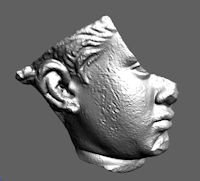
Figure 12: 3D scan of the Fishbourne head (Bournemouth University). 3D PDF | WRL (VRML plugin required)
The head was removed from the body with some force, probably with an axe or other bladed tool, substantial blows to the face further fragmenting the image with severe damage noticeable across nose and chin. A single blow, angled at 45 degrees to the left side of the face, fractured the chin, a further heavy impact detaching the forehead and front of the face. This attack upon the face has created a somewhat distorted image, Toynbee observing that the surviving full portrait view is 'decidedly attractive', while from the side, 'the projecting lips and thick, rather snub nose' is 'unprepossessing' (Toynbee 1971, 156). There is a discoloured area across the surviving right cheek and the surface is pitted, indicating either damage sustained at the time of statue dismemberment or, more likely, during the final destruction of Fishbourne palace by fire in the later 3rd-century AD.
Facial features, especially the right eye and mouth, are crisply defined with a small and well-rounded chin. The unformed features, rounded cheeks and general lack of facial muscle tone, shows that the individual portrayed was in early youth (Toynbee 1971, 156), possibly aged between ten and thirteen (Henig 1996, 83). The coiffure is well defined and combed slightly away from the face in thick comma-shaped locks, a single sideburn delicately curling over the right ear. No evidence of the fringe survives. A small triangular 'excrescence' of marble extends out behind the right ear (Toynbee 1971, 156). This does not appear to relate to the original hairstyle and may instead have formed part of an ornate element of head attire, perhaps a laurel wreath or crown, such as the corona civica, an oak leaf crown the wearing of which, by the mid-1st century AD, had become an imperial prerogative (Hiesinger 1975, 115).
The top half of the head is flattened, gradually slanting down from the forehead towards the nape of the neck. This flat surface is slightly dimpled, with two roughly parallel bands of lozenge-shaped holes measuring 4-5mm in width and around 7mm deep. A larger hole penetrates the central area, the discoloured edges of which suggest rusting of an iron dowel or clamp. Given the sloping nature of the upper head, dimples, dowel-hole and the triangular marble 'excrescence', it seems possible that the top of the head had originally been carved as a separate piece to be fitted later. This could in turn imply that the youth had originally belonged to a larger (possibly family) portrait group, with the steadying hand of an elder potentially 'resting on his head' (Cunliffe 1971c, 206).
Alternatively, the young man may, as already indicated, have originally been sporting a laurel wreath or crown, or possibly even a separate helmet or metallic headdress (Cunliffe 1971c, 206). Toynbee (1971, 156), however, doubted that a metal helmet or other form of head attire would have been worn in this instance, as Roman children of the early empire tended to be shown bare-headed. On the other hand, it possible that the 'sliced' appearance of the head reflects nothing more than a shortage of available marble at the time of manufacture (Soffe and Henig 1999, 9), the dimpled incisions being added so that a more malleable material, such as a plaster or stucco, could more effectively adhere to the stone (Padgett 2001, 22).
Toynbee noted that the artistic treatment of the Fishbourne head was suggestive of a young man from the Julio-Claudian family, though she could not see why the owner of the palace or proto-palace would have adorned it with the portrait of a child unless that child 'were his own offspring' (Toynbee 1971, 156). This particular view has developed further in more recent years to the point that it has been stated that the portrait represents a son of King Tiberius Claudius Togidubnus, a Romanised Briton known from an inscription found in Chichester (Collingwood and Wright 1965, 26-7; Russell 2006, 35-8), or even, perhaps, of King Togidubnus himself as a child (Henig 2002, 51). This is an undeniably attractive hypothesis, given the observation that King Togidubnus may conceivably have commissioned the earliest phase of civilian architecture at Fishbourne, the proto-palace. If it were Togidubnus or a member of his family, the importance of the portrait would increase dramatically, given the paucity of ethnic Britons portrayed in stone during the Roman period.
It is worth reiterating, however, that Toynbee's initial view that the figure possibly represented a young member of the Julio-Claudian house may, actually, not be that wide of the mark, for there would indeed be every reason why the palace or proto-palace owner would want the portrait of a another person's child if, say for example, that child was an important member of the imperial family.
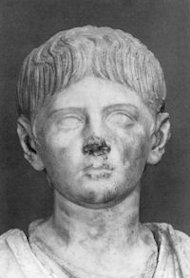
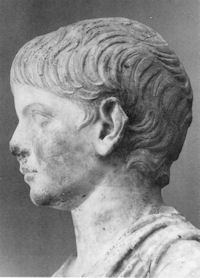
Figure 13: Portrait of Nero from his first major portrait phase of AD 50/51-54, found in the basilica at Velleia, Italy (© Museo Nazionale di Antichità, Parma)
As has already been noted, in the discussion of the Hinckley head, three of the best-known examples in stone of the young teenage Nero can today be found in the Musée du Louvre, Paris (provenance unknown: Giroire and Roger 2007, 80-1), the Detroit Institute of Arts (from Asia Minor: Hiesinger 1975, figs 30-1) and the Museo Nazionale di Antichità in Parma (originally part of a family group housed in the basilica at Velleia, Italy: Hiesinger 1975, 115-17; reproduced here as Figure 13). All three examples portray a toga-wearing youth with carefully combed, central-parted coiffure and lengthy curling sideburns, smooth, regular face, small rounded chin, almond-shaped eyes, aquiline nose and crisply defined lips (Kleiner 1992, 136; Varner 2004, 48). These were probably all created in acknowledgement of Nero becoming heir apparent (in place of Claudius' biological son Britannicus) and were intended to be swiftly disseminated throughout the empire.
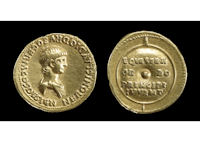
Figure 14: Aureus of Nero in his early teens, minted between AD 51–54 (© Trustees of the British Museum)
The new 3D scan of the smashed portrait from Fishbourne clearly shows the rounded cheeks and the full curving lips that feature so strongly mirror those of the toga-wearing Nero on display in Parma and Paris, as do the slightly protruding ears, curving locks of hair and almond-shaped eyes. As with the Hinckley head, a close match for the Fishbourne portrait may therefore be found within the earliest portrait types of Nero, in this instance one created at, or shortly after, formal adoption by Claudius in AD 50 while still only thirteen (Figure 14).
Internet Archaeology is an open access journal based in the Department of Archaeology, University of York. Except where otherwise noted, content from this work may be used under the terms of the Creative Commons Attribution 3.0 (CC BY) Unported licence, which permits unrestricted use, distribution, and reproduction in any medium, provided that attribution to the author(s), the title of the work, the Internet Archaeology journal and the relevant URL/DOI are given.
Terms and Conditions | Legal Statements | Privacy Policy | Cookies Policy | Citing Internet Archaeology
Internet Archaeology content is preserved for the long term with the Archaeology Data Service. Help sustain and support open access publication by donating to our Open Access Archaeology Fund.
File last updated: Tue Feb 05 2013